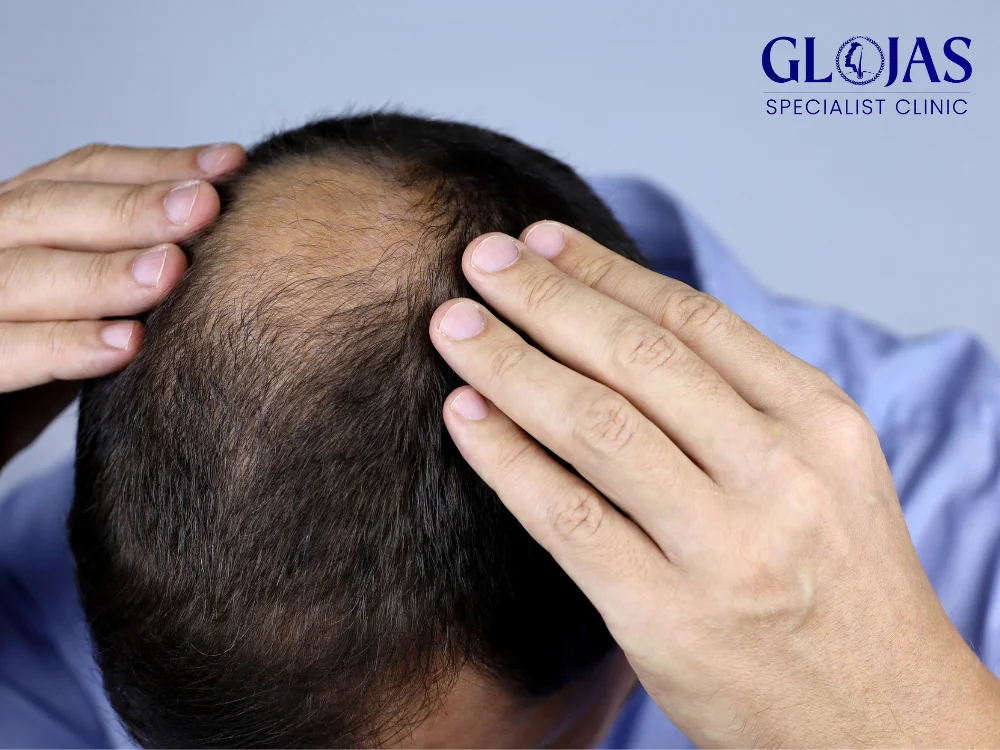Fix Bald Spot: 5 Proven Solutions to Regain Your Confidence

Dealing with a bald spot can be a frustrating and emotional experience for many people. Hair is often associated with identity, self-esteem, and even youthfulness, so noticing thinning hair or a bald spot can feel overwhelming. Whether caused by genetics, stress, hormonal changes, or other factors, there are now effective treatments and strategies available to help combat bald spots and restore hair growth. In this comprehensive guide, we will explore everything from understanding the causes of bald spots to proven treatments that can help you regain your confidence. What Causes Bald Spots? A bald spot can be caused by a variety of factors, including genetics, lifestyle, and medical conditions. Understanding the root cause is essential for finding the right treatment. Here are some of the most common reasons why bald spots appear: 1. Genetic Factors One of the most common causes of bald spots is androgenetic alopecia, also known as male or female pattern baldness. This hereditary condition affects both men and women, and it often leads to a gradual thinning of the hair, particularly around the crown and hairline. If baldness runs in your family, chances are you may experience it as well. 2. Alopecia Areata Alopecia areata is an autoimmune disorder that causes the body to attack its own hair follicles, resulting in small, round bald spots on the scalp or other areas of the body. This condition can occur suddenly and may affect people of all ages. 3. Stress High levels of stress can cause a type of hair loss called telogen effluvium, which results in thinning hair or bald spots. Stress pushes hair follicles into a resting phase, leading to hair shedding. Thankfully, this type of hair loss is usually temporary and can be reversed once stress levels are reduced. 4. Nutritional Deficiencies Your diet plays a significant role in hair health. Deficiencies in key nutrients like iron, biotin, zinc, and vitamin D can contribute to hair thinning and bald spots. A well-balanced diet rich in vitamins and minerals can support healthy hair growth. 5. Hormonal Changes Hormonal fluctuations, especially during pregnancy, menopause, or due to conditions like thyroid disorders, can trigger hair loss or the appearance of bald spots. Hormonal imbalances affect the hair growth cycle, causing more hair to enter the shedding phase. Best Treatments for Bald Spots Once you’ve identified the cause of your bald spot, the next step is finding a suitable treatment. Here are five proven solutions for treating bald spots and promoting hair regrowth. 1. Minoxidil (Rogaine) Minoxidil is one of the most widely used over-the-counter treatments for hair loss. It is FDA-approved for both men and women and works by stimulating the hair follicles to promote hair growth. Minoxidil is available as a topical solution or foam and is applied directly to the scalp. How it works: Increases blood flow to the hair follicles, which helps nourish the follicles and encourage hair regrowth. Can be effective for treating both male and female pattern baldness, especially around the crown and hairline. Minoxidil should be used consistently for at least 3 to 6 months to see noticeable results. However, once you stop using it, hair loss may resume. 2. Platelet-Rich Plasma (PRP) Therapy PRP therapy is a relatively new treatment for hair loss that uses your own blood to promote hair growth. During this procedure, a small amount of blood is drawn, processed to isolate the platelet-rich plasma, and then injected into the scalp where the bald spot is located. How it works: PRP contains growth factors that help stimulate hair follicles, promoting new hair growth and improving the thickness of existing hair. Effective for people experiencing androgenetic alopecia and other forms of hair loss. PRP therapy typically requires multiple sessions, and results can be seen after several months of treatment. 3. Hair Transplant Surgery For individuals with more significant hair loss or larger bald spots, hair transplant surgery may be a viable solution. This surgical procedure involves removing healthy hair follicles from one area of the scalp (usually the back or sides of the head) and transplanting them to the area with thinning hair or bald spots. Types of hair transplant surgery: Follicular Unit Extraction (FUE): Individual hair follicles are harvested and transplanted to the bald spot. This method is minimally invasive and leaves no visible scars. Follicular Unit Transplantation (FUT): A strip of scalp with healthy hair is removed, and the follicles are transplanted. This method may leave a small linear scar but can transplant more follicles at once. Hair transplant surgery offers permanent results, but it requires careful consideration and consultation with a qualified surgeon. 4. Laser Therapy Low-level laser therapy (LLLT) is a non-invasive treatment for hair loss that uses light to stimulate hair follicles. This treatment can be done in a clinical setting or at home using FDA-approved laser devices, such as laser combs or helmets. How it works: Laser therapy increases circulation and blood flow to the scalp, which helps stimulate the hair follicles and encourage hair growth. It is a safe and painless treatment option for people experiencing bald spots due to androgenetic alopecia. LLLT works best when combined with other hair loss treatments, such as Minoxidil or PRP therapy, and may require several sessions to see visible results. 5. Scalp Micropigmentation (SMP) Scalp micropigmentation is a cosmetic procedure that involves tattooing tiny dots on the scalp to mimic the appearance of hair follicles. While this treatment does not restore hair growth, it can effectively camouflage bald spots and create the illusion of fuller hair. How it works: SMP is a non-surgical procedure that is ideal for people with large bald spots or thinning hair. The results are immediate and can last several years with proper care. SMP is a great option for those who want a fast solution to cover bald spots without undergoing surgery or using topical treatments. Lifestyle Changes to Support Hair Growth In addition to medical treatments, making certain lifestyle changes can support hair growth






